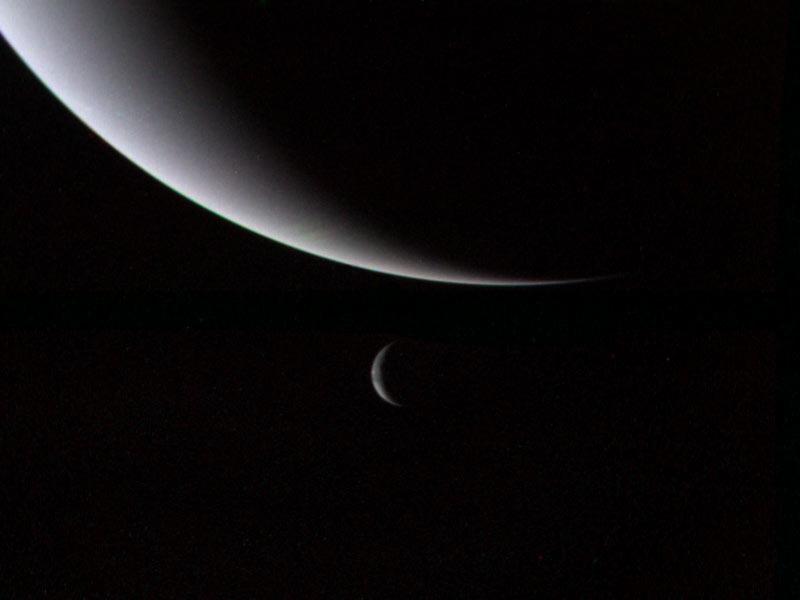Neptune: New moon discovered using Hubble Space Telescope
A photo of Neptune and its moon Triton as captured by the Voyager 2.
Neptune has a new moon – making 14 in all so far.
NASA's Hubble Space Telescope discovered the moon, S/2004 N 1, orbiting the giant planet.
It is said to be no more than 12 miles across, making it incredibly tiny – 100 million times fainter than the faintest star we can see with our eyes.
The tiny moon managed to escape discovery by NASA’s Voyager 2 spacecraft when it passed by the planet in 1989.
It was discovered by Mark Showalter of the SETI Institute in Mountain View, Calif., earlier this month while he studied Neptune's rings.
More from GlobalPost: Strange blue world: Hubble spies cobalt-hued planet (VIDEO)
Showalter looked beyond the rings and spotted a white dot. Using archival photos he watched the movement of the dot over the course of five years.
The dot was a moon that circles the massive planet at a lightning speed – every 23 hours.
“The moons and arcs orbit very quickly, so we had to devise a way to follow their motion in order to bring out the details of the system,” said Showalter.
“It’s the same reason a sports photographer tracks a running athlete — the athlete stays in focus, but the background blurs."
More from GlobalPost: Habitable planet discovered circling Tau Ceti, a star close to Earth
